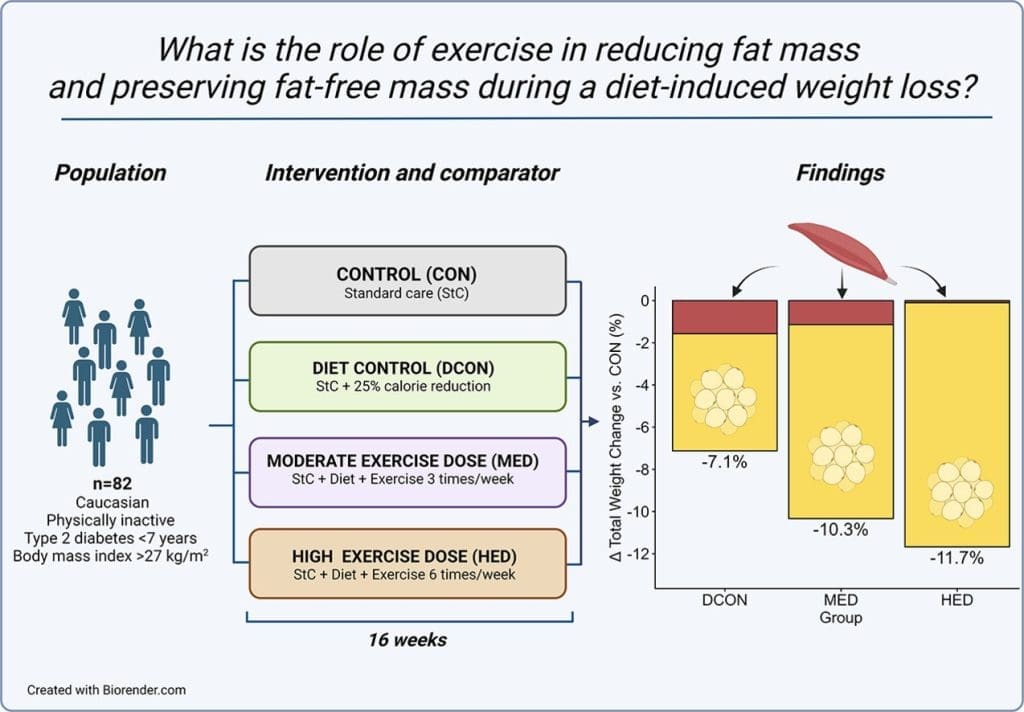
Our funded researcher Mark Lyngbæk (PhD, Rigshospitalet) recently joined exercise physiologist Henrik Duer’s podcast Mediano Health to talk about what happens when you combine calorie restriction with different doses of exercise in people with type 2 diabetes.
Photo credit: www.nilsmeilvang.com

Mark was invited to talk about findings from the DOSE-EX trial: Effects of different doses of exercise and diet-induced weight loss on beta-cell function in type 2 diabetes: a randomized clinical trial.
The trial formed the basis of his PhD at the TrygFondens Centre for Physical Activity Research, Rigshospitalet.
We have talked with Mark Lyngbæk about his podcast experience and research findings.
We explore how exercise volumes and dietary changes affect beta-cell function and body composition in people living with type 2 diabetes—and why these findings might be more nuanced than you’d expect:
Listen to the podcast here (the podcast is in Danish)
The onset and progression of type 2 diabetes are closely tied to how well the pancreatic beta-cells can produce, store, and secrete insulin to counteract insulin resistance. In short, beta-cell function is central to maintaining glycaemic control for people with and without diabetes.
From a clinical perspective, it is well accepted that weight loss improves cardiometabolic outcomes—but most of the benefit seems to come from reducing excessive fat mass, rather than simply lowering body weight.
What’s less clear is how the volume of exercise, when added to moderate caloric restriction, influences these outcomes—particularly when beta-cell function is the primary endpoint. That’s where DOSE-EX comes in.

Graph description: All interventions indicated improvements in body composition compared to standard care (CON). Furthermore, adding exercise 3 times per week to caloric restriction did not fully mitigate the loss in fat-free mass during caloric restriction.
Compared to the control group (CON) the fat-free mass loss relative to the total weight lost (95%CI) was 22% (9% to 32%), 11% (3% to 20%), and 1% (–9% to 8%) for the diet control group (DCON), moderate exercise dose (MED), and high exercise dose (HED), respectively.
One exploratory finding worth noting: we may have identified insulin blunting, which, to our knowledge, hasn’t been previously described in people with type 2 diabetes.
All interventions improved body composition—but adding exercise to caloric restriction led to significantly greater reductions in:
✔️ Total fat mass
✔️ Visceral fat
✔️ Body weight
While maintaining muscle strength and improving cardiorespiratory fitness in a dose-dependent manner.
Perhaps most striking: participants who completed six exercise sessions per week (including six resistance training sets per major muscle group/week) managed to fully preserve fat-free mass—while losing more than 11 kg of body fat on average.
While fat-free mass is often used as a surrogate for skeletal muscle, there’s still a clear gap: no clinical guidelines currently outline how best to structure exercise training, diet composition, or caloric restriction to support both fat loss and muscle preservation in type 2 diabetes management.
Mark Lyngbæk touches on both papers in the episode, with particular focus on the body composition results:
1. Beta-cell function (primary trial):
Effects of different doses of exercise and diet-induced weight loss on beta-cell function in type 2 diabetes (DOSE-EX): a randomized clinical trial
🔗 Effects of different doses of exercise and diet-induced weight loss on beta-cell function in type 2 diabetes (DOSE-EX): a randomized clinical trial – PubMed
2. Body composition and fat loss (secondary analysis):
Effects of caloric restriction with different doses of exercise on fat loss in people living with type 2 diabetes: A secondary analysis of the DOSE-EX randomized clinical trial
🔗 The Journal of Sport and Health Science
This research was supported by a grant from the Danish Diabetes Academy (now Danish Diabetes and Endocrine Academy), funded by the Novo Nordisk Foundation (grant no. NNF17SA0031406).
The Centre for Physical Activity Research is supported by TrygFonden (grant IDs: 101390, 20045, and 125132).
Thanks to Henrik Duer and Mediano Health for the invitation and the engaging conversation.
EAN: 5798 0022 30642
Reference: 1025 0006
CVR: 29 19 09 09